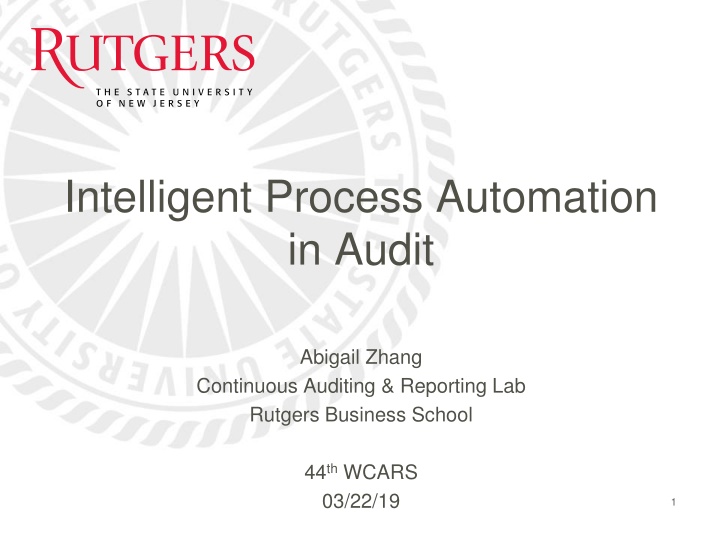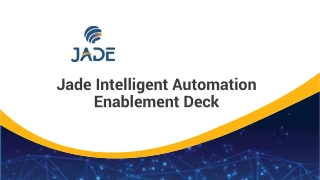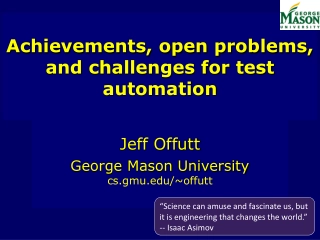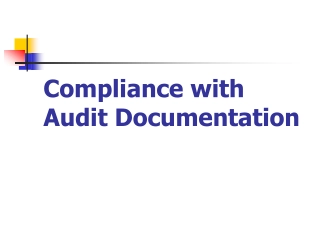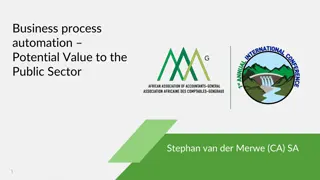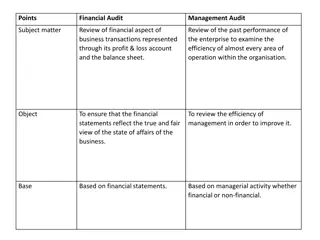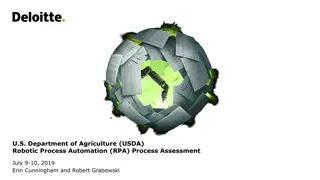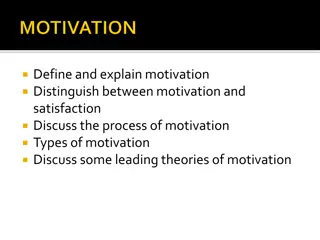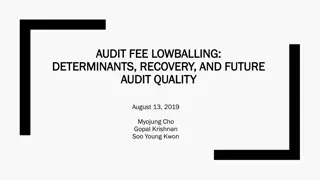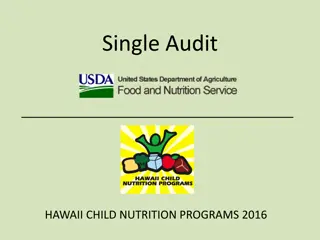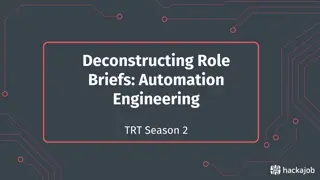Intelligent Process Automation in Audit: Overview and Motivation
Audit automation is crucial for continuous audit processes. This presentation discusses Intelligent Process Automation (IPA) in audit, outlining frameworks and research objectives. It explores the need for process automation to enhance audit efficiency and effectiveness, presenting theoretical constructs and technologies supporting IPA implementation in audit workflows.
Uploaded on Mar 20, 2025 | 0 Views
Download Presentation

Please find below an Image/Link to download the presentation.
The content on the website is provided AS IS for your information and personal use only. It may not be sold, licensed, or shared on other websites without obtaining consent from the author.If you encounter any issues during the download, it is possible that the publisher has removed the file from their server.
You are allowed to download the files provided on this website for personal or commercial use, subject to the condition that they are used lawfully. All files are the property of their respective owners.
The content on the website is provided AS IS for your information and personal use only. It may not be sold, licensed, or shared on other websites without obtaining consent from the author.
E N D
Presentation Transcript
Intelligent Process Automation in Audit Abigail Zhang Continuous Auditing & Reporting Lab Rutgers Business School 44thWCARS 03/22/19 1
Overview Motivation and Introduction IPA ecosystem in audit Three frameworks of IPA in audit Auditor-in-the-loop IPA ecosystem Audit workflow driven by IPA Implementation framework IPA facilitates Continuous Audit Conclusion 2
Motivation Audit automation is both the necessary and sufficient condition for continuous audit (M Alles, Kogan, and Vasarhelyi, 2008). Today s audit automation is mainly about isolated audit task automation digitizing working papers and their management using Microsoft Office Software and CASEWARE using audit software (e.g. IDEA and ACL) to perform certain audit testing, and using statistics software (e.g. STATA and R) to run regressions. However, audit needs process automation to enhance efficiency and effectiveness. Little literature explicitly study audit automation from the workflow point of view 3
Research Objectives and Contributions Formalizes the theories of audit process automation and the technologies that can achieve it, with an emphasis on Intelligent Process Automation (IPA). Constructs theoretical frameworks of IPA in audit to lend guidance to the audit profession and to stimulate other academic research in this area. Proposes that IPA can achieve flexible and scalable audit process automation, could solve the independence issue of CA, and facilitate CA in the external audit. 4
Introduction A network of workflows (Adapted from Cichocki et al., 2012) 5
Introduction The Audit Workflow
Introduction Pre-defined Process Automation (PPA): the patterns of the process are pre-defined by human. Process Automation Robotic Process Automation (RPA): run application software in the same way that a person works with that software. Intelligent Process Automation (IPA): the patterns of the process can be learned and predicted by AI, and then recommended to human. RPA This paper constructs theoretical frameworks of IPA in audit to lend guidance to the audit profession and to stimulate other academic research in this area. PPA IPA 7
IPA Ecosystem in Audit IPA Ecosystem Cognitive computing Artificial intelligence Other technologies RPA Machine learning Computer vision Virtual agent NLP/ NLG Data analytics Smart contracts Blockchai n Others Drones IoT Others 8
IPA Ecosystem in Audit IPA Ecosystem Cognitive computing Artificial intelligence Other technologies RPA Machine learning Computer vision Virtual agent NLP/ NLG Data analytics Smart contracts Blockchai n Others Drones IoT Others 9
IPA Ecosystem in Audit IPA Ecosystem Cognitive computing Artificial intelligence Other technologies RPA Machine learning Computer vision Virtual agent NLP/ NLG Data analytics Smart contracts Blockchai n Others Drones IoT Others 10
IPA Ecosystem in Audit IPA Ecosystem Cognitive computing Artificial intelligence Other technologies RPA Machine learning Computer vision Virtual agent NLP/ NLG Data analytics Smart contracts Blockchai n Others Drones IoT Others 11
Think-Feel-Do loop of IPA AI and cognitive technologies Human Think Drones, NLP, IoT, etc. PPA/RPA Feel Do 12
The Audit Workflow Driven by IPA Smart workflow Smart workflow Smart workflow 14
Framework of Implementing IPA in Audit 1. Process understanding 2. Process redesign 3. Process modularization 6. IPA prototype testing and modification 5. Process orchestration 4. Process automation PPA/RPA Algorithm training and testing 15
IPA Facilitates Continuous Audit IPA to facilitate CA in external audit IPA is non-invasive, so the data acquisition in real time is expected to be easier and to get less resistance from the client. IPA provides new opportunities for the existing manual work in external audits to be automated The automation facilitated by IPA provides chances for external audits to be conducted more timely IPA to mitigate the independence issue of CA IPA can interact with the client system from the presentation layer The auditors can build the CA layer on top of the client system in a non-invasive way and can be separated from manager s monitoring system, enhancing the independence of the auditors. 16
Conclusion IPA could achieve flexible, scalable, and intelligent process automation in audit. Auditors work will be further shifted to the part that needs their professional judgement. IPA could enhance the efficiency and effectiveness of audit IPA could facilitate continuous audit 17
If we knew what it was we were doing, it would not be called research, would it? -Albert Einstein Please contact me at: abigail.zhang@rutgers.edu 18
